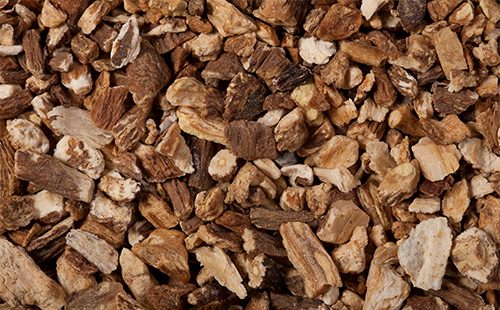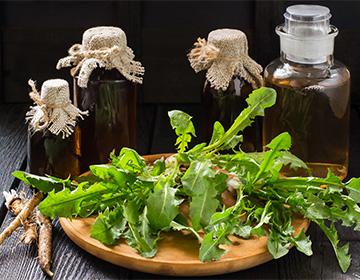The content of the article
A developed rhizome makes it almost impossible to remove a dandelion from the garden if the plant has taken root here. The underground part of the flower is multi-level. It is impossible to pry out entirely - always at least a part will remain in the ground that will give a new shoot.
This probably explains the widespread widespread dissemination of culture on the planet. It does not grow only in the far North and in desert regions. In Russia it is found in meadows, forest edges, clearings, fields, in gardens and parks, in wastelands, along roads, in residential yards. In places, it forms endless thickets that look like a golden carpet in summer.
Characteristics of plant materials
“Some plants are capable of absorbing heavy metals from the soil,” commented G. Chugunov, senior researcher at the Mordovian nature reserve and D. Bashmakov, associate professor at the University of Mordovia, in the paper “On the Most Common Dandelion ...”. - They naturally clean the soils contaminated as a result of human technological activity. A whole direction has appeared, called phytoremediation, the essence of which is the isolation of dangerous impurities from the environment with the help of plants. ”
From the point of view of the effectiveness of phytoremediation, Russian scientists studied the dandelion. The results are stunning. The plant turned out to be the leader in the absorption of heavy chemical elements from soils, plus everything “omnivorous”. The culture is able to absorb tons (t) of copper, zinc, iron, nickel, chromium.
Calculations showed that 1 km2 of a crop population is able to draw from contaminated soil:
- lead - up to 1 t;
- copper and nickel - up to 2 t;
- zinc and manganese - up to 10 tons
Procurement rules
The results of the research of Russian scientists should be adapted to the needs of the pharmaceutical industry and medicine. Obviously, it is absolutely categorically impossible to collect plant roots for treatment everywhere. The flower absorbs toxins, like a sponge, and can cause irreparable harm to the body.
Follow the three rules for choosing the location of the workpiece.
- Do not collect in the city. It is here that the concentration of toxins in the soil reaches its maximum values. Harvesting should only be done outside the settlements.
- Keep your distance to industrial areas. It should be 30-50 km.The same applies to large cities, megacities, production centers.
- Keep clear of traffic. The distance to the highway should be at least 200 m, to the railway track - at least 500 m.
Collection technique
This is a perennial plant, therefore, the content in the rhizome of biologically active substances is characterized by seasonality. Their concentration is highest at the beginning of autumn, and the lowest - in April-May, when the surface part grows.
Harvesting is carried out in August-September, during the period of partial drying of leaves and stems. The roots are dug up or pulled out of the soil, washed with cold water, cleaned of small parts. Large - cut into pieces 10-15 cm long, they are left in the sun to stare for several hours. Cleaned when the raw materials stop oozing.
Dry under a canopy, in an attic with good ventilation or in a drying chamber. In the latter case, set the temperature to 40-50aboutC. Can also be dried in ovens. The roots are laid out in one layer, dried to brittleness.
Composition
The healing properties of the raw materials are due to the high content of carbohydrates, phenolic compounds and tripertenes. Revealed:
- flavonoids:
- sterols;
- rubber;
- fatty acids (palmitic, oleic, linoleic);
- terpenoids (bitterness).
Dandelion rhizomes are inulin-bearing raw materials. The inulin content is up to 40% of the total mass of the root system, which is almost equivalent to the volume of the substance in the underground parts chicory and Jerusalem artichoke. This is a high molecular weight glucofructosan, the plant uses it as a depot for the accumulation of nutrients.
For the human body, inulin is a valuable substance with prebiotic properties. It acts as a regulator of intestinal microflora, nourishing lactobacilli and bifidobacteria, stimulating their growth and activity. The predominance of beneficial intestinal microflora over pathogenic (clostridia, enterobacteria) ensures the proper functioning of not only the digestive system. The latest research has established that the composition of the intestinal microflora has a direct effect on brain activity. Bifidobacteria reduce the risk of developing malignant cells in the body, which suggests a high prophylactic activity of dandelion root in relation to cancer.
In addition, inulin enhances the outflow of bile, and also works in the following directions:
- lowers blood cholesterol - prevents the appearance of blood clots and plaques;
- normalizes immune responses - which helps to reduce the incidence of colds;
- stimulates the production of vitamins — Group B and folic acid;
- activates contractile activity of the intestinal wall - has sorption activity, removes toxins and toxins.
pharmachologic effect
The latest research results allow us to use the root of the plant to solve five pressing problems:
- oncology prevention - due to the high content of inulin and flavonoids;
- weight loss - due to the ability to normalize lipid metabolism;
- body cleansing - from heavy metals, radionuclides;
- treatment of chronic diarrhea - due to an imbalance of intestinal microflora;
- prevention and treatment of atherosclerosis - as well as the purification of blood from cholesterol plaques.
Other useful properties of the underground part of culture are also known to folk medicine:
- stimulates appetite;
- increases the secretion of digestive glands;
- stimulates the formation of bile;
- activates urination;
- eliminates renal, hepatic colic;
- relieves spasm of smooth muscles of the intestine.
Dandelion root is used as an anesthetic for disorders of the gastrointestinal tract. It is used both for cramping and stomach pain on the background of peptic ulcer. Helps with bloating, stimulates the discharge of gases.

Contraindications
An absolute contraindication to the use of the underground part of the plant is blockage of the bile ducts. A herbal remedy activates the production of bile, which can lead to rupture of the gallbladder. It is also not recommended for use with:
- bowel obstruction;
- acute inflammation of the gallbladder;
- increased acidity of the stomach.
Individual allergic reactions are possible, which are manifested by disorders of the respiratory system, contact dermatitis. The risk is increased in the presence of an allergy to plants of the Astro family.
Prescription Drugs
In folk medicine, rhizomes are used for the preparation of mono-drugs, and also introduced into the composition of fees. Isolation of bioactive substances from this type of raw material is possible only by heating, therefore, aqueous forms of drugs are common - vapors (infusions) and decoctions.
Infusion
Features. It normalizes the work of the gastrointestinal tract, relieves spasm and abdominal pain, improves the function of the liver and pancreas. Assign for gastritis, diseases of the liver and gall bladder, urinary system. Useful for atherosclerosis, as it removes cholesterol from the body. Increases the protective functions of the skin with rashes, allergic dermatitis.
How to make and use
- Grind the raw materials, take two tablespoons.
- Pour in a thermos, pour boiling water with a volume of 200 ml.
- Leave to brew for two hours.
- Strain.
- Take 50 ml four times a day 30 minutes before meals.
Decoction
Features. Diuretic, choleretic drug designed to treat diseases of the urinary and digestive systems. It has a pronounced bitter taste, which stimulates appetite, increases the secretion of the glands of the gastrointestinal tract.
How to make and use
- Grind the raw materials, take three tablespoons.
- Pour into an enameled container, pour boiling water with a volume of 400 ml.
- Heat over low heat for 15 minutes.
- Leave to brew for two hours.
- Strain.
- Take a glass twice a day half an hour before meals.
Powder
Features. Means for external and internal use. Used to treat wounds, skin lesions of various nature (ulcers, bedsores, frostbite). The powder stimulates wound healing, but is ineffective against infected, purulent wounds. Inside prescribed for metabolic disorders, obesity, atherosclerosis, to stimulate appetite.
How to make and use
- Cut the raw materials into small pieces.
- Grind into powder in a coffee grinder.
- Sprinkle the affected areas of the skin evenly twice a day.
- Inside, take 1.5-2 g three times a day before meals.
Collection from worms
Features. The underground part of the flower is included in the collection from the worms.The composition is especially effective for small whipworms who prefer to nest in the cecum. The composition also includes centaury grass and flowers immortelle sandy.
How to make and use
- Grind all the components of the collection.
- Mix two tablespoons each.
- Pour boiling water with a volume of 200 ml.
- Leave to brew for two hours.
- Strain.
- Take a thick infusion of 50 ml three times a day after meals.
Collection of blood purifying
Features. The appearance of acne, acne, boils on the face and body, skin itching for no reason indicate a "pollution" of the blood. In this case, a blood-purifying collection of nettle leaves, dandelion root and blackthorn flowers will help.
How to make and use
- Grind and mix the ingredients in equal parts.
- Take two tablespoons of the mixture.
- Pour two glasses of boiling water.
- Put in the oven at low heat for three hours.
- Strain.
- Drink the received volume during the day. Continue treatment for two weeks. At the same time, follow a milk diet with a restriction of red meat, alcohol, and rich pastries.

Eczema collection
Features. Skin lesions are treated locally with mono-agents from the plant. To enhance the therapeutic effect, it is recommended to use the collection of dandelion roots andburdock inside.
How to do
- Grind the underground parts of plants.
- Mix in equal proportions.
- Take two tablespoons of the mixture.
- Pour in three glasses of hot water.
- Leave to infuse overnight.
- Pour five minutes in the morning over low heat.
- Leave to infuse for 20 minutes.
- Strain.
- Take three times a day in half a glass. Lubricate eczema-affected skin at the same time. birch tar.
Powder from dried rhizomes is used to make a coffee substitute drink: pour a teaspoon with boiling water and add sugar. It can also be mixed in equal proportions with chicory. Such a drink has an exquisite bitterness and its own sweetness, so it is not required to sweeten it.

